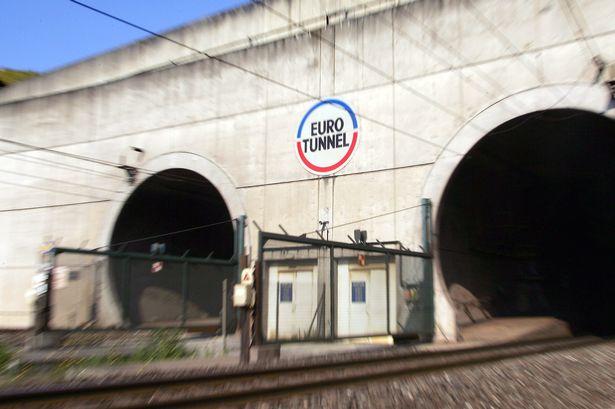The Channel Tunnel, a marvel of modern engineering, represents a physical manifestation of the enduring human drive to overcome geographical barriers and connect disparate cultures. This remarkable undersea passage, stretching for 50.45 kilometers (31.4 miles), links Folkestone in the United Kingdom to Coquelles in France, effectively shrinking the English Channel to a mere 35-minute train journey. Its construction, a colossal undertaking spanning from 1988 to 1994, required an investment of £4.65 billion (equivalent to approximately £12 billion in 2023), a testament to the ambitious scale and complexity of the project. The tunnel, operating 24 hours a day, 365 days a year, serves as a vital artery for trade, tourism, and cultural exchange between the UK and mainland Europe. Its existence has irrevocably altered the dynamics of travel and interaction between these two regions, fostering a closer relationship and facilitating a greater flow of goods and people.
The Channel Tunnel, often referred to as the “Chunnel,” comprises three interconnected tunnels: two main railway tunnels for passenger and freight trains, each 15 meters in diameter, and a smaller central service tunnel, measuring 4.8 meters in diameter. This central tunnel serves as an essential access point for maintenance, emergency services, and evacuation procedures. The construction of these tunnels required the excavation of millions of cubic meters of chalk marl, a soft rock formation beneath the seabed, using specialized tunnel boring machines (TBMs). These massive machines, weighing over 1,000 tons each, meticulously carved their way through the earth, advancing several meters per day. The excavated material was then transported back to the surface and used for land reclamation projects, demonstrating a commitment to minimizing environmental impact.
The engineering challenges posed by the Channel Tunnel project were immense and unprecedented. Engineers had to contend with varying geological conditions, high water pressure, and the potential for seismic activity. The need to ensure the structural integrity of the tunnels over such a long distance, while maintaining a consistent gradient for train operation, required innovative design solutions and meticulous construction techniques. Moreover, the project demanded the coordination of vast teams of engineers, geologists, and construction workers from both the UK and France, highlighting the importance of international collaboration in achieving ambitious engineering feats.
The Channel Tunnel’s impact on travel and trade has been transformative. Prior to its opening, travel between Britain and Europe primarily involved ferries or air travel, both of which were susceptible to delays caused by weather conditions. The tunnel offered a fast, reliable, and all-weather alternative, significantly reducing travel time and increasing the frequency of cross-channel journeys. This improved connectivity has facilitated the growth of both tourism and trade, stimulating economic activity on both sides of the Channel. The ability to transport goods quickly and efficiently by rail has streamlined supply chains and fostered closer economic ties between the UK and mainland Europe.
Beyond its economic and logistical benefits, the Channel Tunnel also holds symbolic significance. It represents a tangible link between two nations with a long and complex history, fostering closer cultural understanding and promoting a sense of shared identity. The ability to travel seamlessly between countries has broadened perspectives, increased opportunities for collaboration, and contributed to a more interconnected world. The tunnel’s existence serves as a testament to the power of human ingenuity and collaboration, demonstrating that even seemingly insurmountable geographical barriers can be overcome with determination and technological innovation.
In conclusion, the Channel Tunnel stands as a landmark achievement in engineering, a symbol of international cooperation, and a catalyst for economic and cultural exchange. Its construction, a testament to human ambition and ingenuity, has revolutionized travel and trade between the UK and mainland Europe, forging a closer relationship between these two regions. The tunnel’s continued operation underscores its enduring importance as a vital transportation link, facilitating the flow of goods and people and fostering a greater sense of interconnectedness in an increasingly globalized world. The economic and societal benefits derived from this undersea marvel are a clear indication of the far-reaching impact of ambitious engineering projects that connect nations and transform the way we live, work, and interact with the world around us.














